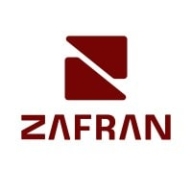


Qualys CyberSecurity Asset Management and Strike are competitors in the cybersecurity sector. Qualys appears to have an advantage in pricing and support with a focus on affordable management, while Strike is favored for its extensive features.
Features: Qualys focuses on vulnerability management, detailed asset inventory, and protection oversight. Strike offers advanced threat detection, automation, and proactive security features that appeal to organizations seeking strong defense mechanisms.
Ease of Deployment and Customer Service: Qualys provides an easy deployment process and responsive customer service aiding in integration. Strike, although complex in deployment, is supported by an excellent customer service team offering profound technical support.
Pricing and ROI: Qualys is cost-effective with competitive pricing and promising ROI through efficient asset management. Strike, with higher setup costs, justifies the investment by offering comprehensive security solutions that enhance long-term ROI.


Zafran Security integrates with existing security tools to identify and mitigate vulnerabilities effectively, proving that most critical vulnerabilities are not exploitable, optimizing threat management.
Zafran Security introduces an innovative operating model for managing security threats and vulnerabilities. By leveraging the threat exposure management platform, it pinpoints and prioritizes exploitable vulnerabilities, reducing risk through immediate remediation. This platform enhances your hybrid cloud security by normalizing vulnerability signals and integrating specific IT context data, such as CVE runtime presence and internet asset reachability, into its analysis. No longer reliant on patch windows, Zafran Security allows you to manage risks actively.
What are the key features of Zafran Security?
What benefits can users expect from Zafran Security?
In industries where security is paramount, such as finance and healthcare, Zafran Security provides invaluable protection by ensuring that only exploitable vulnerabilities are addressed. It allows entities to maintain robust security measures while allocating resources efficiently, fitting seamlessly into existing security strategies.
Qualys CyberSecurity Asset Management provides advanced real-time asset visibility, dynamic tagging, and External Attack Surface Management. It streamlines asset discovery and management using cloud agents and IP-based scanning, enhancing risk management and software lifecycle tracking.
Qualys CyberSecurity Asset Management offers a comprehensive solution for managing asset inventories and tracking software lifecycle states. It facilitates network visibility and supports zero-day vulnerability solutions, enhancing security posture through efficient monitoring. Users benefit from its cloud-based interface, which provides in-depth asset configurations and insights. Key features include automated vulnerability scanning and unauthorized software management, reducing manual efforts. The platform also emphasizes the importance of timely remediation and ongoing risk mitigation across multiple environments. Despite its strengths, users note the need for enhanced integration with additional CMDBs beyond ServiceNow, as well as cost efficiency improvements. Requests also include better report customization, more scan control, and a simplified UI.
What are the key features of Qualys CyberSecurity Asset Management?In industries like finance, healthcare, and manufacturing, Qualys CyberSecurity Asset Management enhances asset control by offering visibility into hardware and software configurations. It aids in maintaining security compliance and identifying unauthorized software, crucial for sectors with strict regulatory requirements.
Strike provides continuous pentesting and predictive vulnerability management, leveraging autonomous technology and ethical hackers to safeguard businesses from critical threats.
As a leader in cybersecurity, Strike identifies high-impact vulnerabilities and manages risks by integrating certified ethical hackers with advanced technology. This approach ensures businesses remain secure amidst an evolving threat landscape. By focusing on critical threat identification, Strike helps organizations maintain confidence and safety in their operations.
What are the key features of Strike?In the finance industry, Strike is often used for securing sensitive data against emerging threats. In healthcare, it helps protect patient information by identifying vulnerabilities before they can be exploited. For retail, Strike strengthens transaction security and customer data protection, ensuring both compliance and consumer trust.
We monitor all Vulnerability Management reviews to prevent fraudulent reviews and keep review quality high. We do not post reviews by company employees or direct competitors. We validate each review for authenticity via cross-reference with LinkedIn, and personal follow-up with the reviewer when necessary.